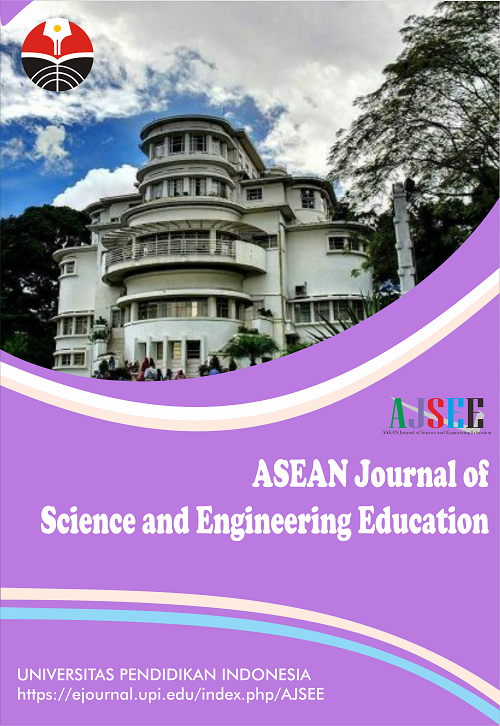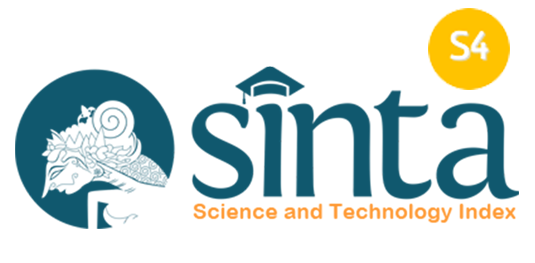A Phonemic-Based Methodology for Overcoming Dyslexia in Primary School Children through Sound Analysis Instruction
Abstract
Keywords
Full Text:
PDFReferences
Adesokan, A., Oyunniyi, A.O., and Abdulgafar, S.I. (2024). Parents’ and teachers’ perception of indicators for the choice of marriage partner among hearing-impaired adults. Indonesian Journal of Community and Special Needs Education, 4(1), 39-52.
Al Otaiba, S., Kosanovich, M. L., Torgesen, J. K., Kamhi, A. G., and Catts, H. W. (2012). Assessment and instruction for phonemic awareness and word recognition skills. Language and Reading Disabilities, 3, 112-140.
Alkhazaleh, M., Khasawneh, M. A. S., Alkhazaleh, Z. M., Alelaimat, A. M., and Alotaibi, M. M. (2022). An approach to assist dyslexia in reading issue: An experimental study. Przestrzeń Społeczna (Social Space), 22(3), 133-151.
Bazen, L., de Bree, E. H., van den Boer, M., and de Jong, P. F. (2023). Perceived negative consequences of dyslexia: The influence of person and environmental factors. Annals of Dyslexia, 73(2), 214-234.
Becker, R., and Sylvan, L. (2021). Coupling articulatory placement strategies with phonemic awareness instruction to support emergent literacy skills in preschool children: A collaborative approach. Language, Speech, and Hearing Services in Schools, 52(2), 661-674.
Bowers, L. M., and Ramsdell, H. L. (2023). Rethinking literacy intervention: Addressing a practice gap with best practices from multisensory structured language approaches. Language, Speech, and Hearing Services in Schools, 54(3), 815-830.
Cabbage, K. L., Farquharson, K., Iuzzini-Seigel, J., Zuk, J., and Hogan, T. P. (2018). Exploring the overlap between dyslexia and speech sound production deficits. Language, Speech, and Hearing Services in Schools, 49(4), 774-786.
Carson, K. L., Gillon, G. T., and Boustead, T. M. (2013). Classroom phonological awareness instruction and literacy outcomes in the first year of school. Language, Speech, and Hearing Services in Schools, 44(2), 147-160.
Chyl, K., Kossowski, B., Dębska, A., Łuniewska, M., Marchewka, A., Pugh, K. R., and Jednoróg, K. (2019). Reading acquisition in children: Developmental processes and dyslexia-specific effects. Journal of the American Academy of Child and Adolescent Psychiatry, 58(10), 948-960.
Clayton, F. J., West, G., Sears, C., Hulme, C., and Lervåg, A. (2020). A longitudinal study of early reading development: Letter-sound knowledge, phoneme awareness and RAN, but not letter-sound integration, predict variations in reading development. Scientific Studies of Reading, 24(2), 91-107.
Cummings, K. D., Kaminski, R. A., Good III, R. H., and O'Neil, M. (2011). Assessing phonemic awareness in preschool and kindergarten: Development and initial validation of first sound fluency. Assessment for Effective Intervention, 36(2), 94-106.
Delgado, J. L. D., Bone, Y. I. E. B., Lascano, M. A. G. L., and España, S. G. G. E. (2019). Dyslexia as learning problem and its pedagogical intervention. International Journal of Health Sciences, 3(3), 1-7.
Gonzalez-Frey, S. M., and Ehri, L. C. (2021). Connected phonation is more effective than segmented phonation for teaching beginning readers to decode unfamiliar words. Scientific Studies of Reading, 25(3), 272-285.
Hasanah, R., Munawwaroh, I., Hasanah, M., and Mundiri, A. (2024). Fostering inclusivity: Strategies for supporting students with special needs in mainstream classrooms. FALASIFA: Jurnal Studi Keislaman, 15(1), 73-85.
Kapnoula, E. C., Winn, M. B., Kong, E. J., Edwards, J., and McMurray, B. (2017). Evaluating the sources and functions of gradiency in phoneme categorization: An individual differences approach. Journal of Experimental Psychology: Human Perception and Performance, 43(9), 1594.
Kovelman, I., Norton, E. S., Christodoulou, J. A., Gaab, N., Lieberman, D. A., Triantafyllou, C., and Gabrieli, J. D. (2012). Brain basis of phonological awareness for spoken language in children and its disruption in dyslexia. Cerebral Cortex, 22(4), 754-764.
Law, J. M., Vandermosten, M., Ghesquiere, P., and Wouters, J. (2014). The relationship of phonological ability, speech perception, and auditory perception in adults with dyslexia. Frontiers in Human Neuroscience, 8, 482.
Leitão, S., Dzidic, P., Claessen, M., Gordon, J., Howard, K., Nayton, M., and Boyes, M. E. (2017). Exploring the impact of living with dyslexia: The perspectives of children and their parents. International Journal of Speech-Language Pathology, 19(3), 322-334.
Lin, Y., Zhang, X., Huang, Q., Lv, L., Huang, A., Li, A., and Huang, Y. (2020). The prevalence of dyslexia in primary school children and their Chinese literacy assessment in Shantou, China. International Journal of Environmental Research and Public Health, 17(19), 7140.
Lindstrom, J. H. (2019). Dyslexia in the schools: Assessment and identification. Teaching Exceptional Children, 51(3), 189-200.
Marasabessy, R. (2023). Teachers’ Perspectives on the education of deaf and hearing difficulty students in Indonesia: Research at SLB-B Negeri Cicendo Bandung. Indonesian Journal of Community and Special Needs Education, 3(1), 21-32.
Milankov, V., Golubović, S., Krstić, T., & Golubović, Š. (2021). Phonological awareness as the foundation of reading acquisition in students reading in transparent orthography. International Journal of Environmental Research and Public Health, 18(10), 5440.
Nithart, C., Demont, E., Metz‐Lutz, M. N., Majerus, S., Poncelet, M., and Leybaert, J. (2011). Early contribution of phonological awareness and later influence of phonological memory throughout reading acquisition. Journal of Research in Reading, 34(3), 346-363.
Novita, S. (2016). Secondary symptoms of dyslexia: A comparison of self-esteem and anxiety profiles of children with and without dyslexia. European Journal of Special Needs Education, 31(2), 279-288.
Pape-Neumann, J., Ermingen-Marbach, M., Grande, M., Willmes, K., and Heim, S. (2015). The role of phonological awareness in treatments of dyslexic primary school children. Acta neurobiologiae experimentalis, 75(1), 80-106.
Rusyani, E., Awaliah, F.A., Maryanti, R., Al Husaeni, D.F., Ragadhita, R., and Susetyo, B. (2022a). The application of speaking development on the establishment of object vocabulary in student with hearing impairment. Indonesian Journal of Educational Research and Technology, 2(1), 45-56.
Rusyani, E., Permana, S., and Ragadhita, R. (2022b). Attitudes of high special school students with hearing impairment to online adaptive physical education learning. Indonesian Journal of Teaching in Science, 2(1), 29-38.
Rusyani, E., Saepulloh, A., Maryanti, R., Ragadhita, R., and Al Husaeni, D.F. (2021). The effect of the team-games-tournament method on improving the learning ability of student with hearing impairment in multiplication concepts. Indonesian Journal of Multidiciplinary Research, 1(2), 219-228.
Ryder, J. F., Tunmer, W. E., and Greaney, K. T. (2008). Explicit instruction in phonemic awareness and phonemically based decoding skills as an intervention strategy for struggling readers in whole language classrooms. Reading and Writing, 21, 349-369.
Sininger, Y. S., Grimes, A., and Christensen, E. (2010). Auditory development in early amplified children: Factors influencing auditory-based communication outcomes in children with hearing loss. Ear and Hearing, 31(2), 166-185.
Soetan, A.K., Onojah, A.O., Alaka, T.B., and Onojah, A.A. (2021). Attitude of hearing-impaired students towards assistive technology utilization in Oyo state adopting the survey method. Indonesian Journal of Community and Special Needs Education, 1(2), 103-118.
Suggate, S. P. (2016). A meta-analysis of the long-term effects of phonemic awareness, phonics, fluency, and reading comprehension interventions. Journal of Learning Disabilities, 49(1), 77-96.
Sumitra, I.D., Wirawan, E., Putra, M., Kusumaningrat, I., and Maulana, H. (2021). Design of webinar information system for people with hearing impairments. Indonesian Journal of Community and Special Needs Education, 1(2), 77-86.
Supriatna, A., and Ediyanto, E. (2021). The implementation of multisensory technique for children with dyslexia. Indonesian Journal of Disability Studies, 8(1), 279-293.
Van der Kleij, S. W., Segers, E., Groen, M. A., and Verhoeven, L. (2019). Post-treatment reading development in children with dyslexia: The challenge remains. Annals of Dyslexia, 69, 279-296.
Wai, N., Chan, Y., and Zhang, K. C. (2014). Effective spelling strategies for students with dyslexia in Hong Kong secondary schools. International Journal of Special Education, 29(1), 14-24.
Whitbread, K. M., Knapp, S. L., and Bengtson, M. (2021). Teaching foundational reading skills to students with intellectual disabilities. Teaching Exceptional Children, 53(6), 424-432.
Yang, L. P., Li, C. B., Li, X. M., Zhai, M. M., Zhao, J., and Weng, X. C. (2022). Prevalence of developmental dyslexia in primary school children: A protocol for systematic review and meta-analysis. World Journal of Pediatrics, 18(12), 804-809.
Yeh, S. S., and Connell, D. B. (2008). Effects of rhyming, vocabulary and phonemic awareness instruction on phoneme awareness. Journal of Research in Reading, 31(2), 243-256.
Yuzaidey, N. A. M., Din, N. C., Ahmad, M., Ibrahim, N., Razak, R. A., and Harun, D. (2018). Interventions for children with dyslexia: A review on current intervention methods. Medical Journal of Malaysia, 73(5), 311-320.
DOI: https://doi.org/10.17509/ajsee.v4i3.82474
Refbacks
- There are currently no refbacks.
Copyright (c) 2025 Universitas Pendidikan Indonesia

This work is licensed under a Creative Commons Attribution-ShareAlike 4.0 International License.














